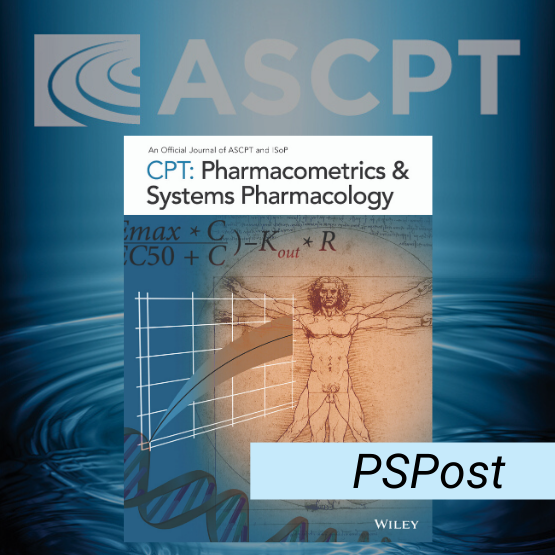Author: Jane PF Bai, Cynthia J. Musante, Suzana Petanceska, Lei Zhang, Liang Zhao, and Ping Zhao on June 25, 2019 
The June 2019 issue of PSP is dedicated to articles contributed by the ASCPT 2019 Annual Meeting Pre-Conference speakers and organizers of “PBPK (Physiologically-based Pharmacokinetic) Modeling for the Development and Approval of Locally Acting Drug Products" and "Advancing QSP (Quantitative Systems Pharmacology) Toward Predictive Drug Development: From Targets to Treatments.” Speakers and panelists of both Pre-Conferences reviewed states of science of each approach, discussed roles to support regulatory decision making, and identified gaps and new opportunities for successful applications of each approach.
The PBPK Pre-Conference was co-sponsored by ASCPT and the Office of Generic Drugs at the US Food and Drug Administration. The scope of the Pre-Conference was the use of PBPK to assess bioequivalence (BE) for locally acting drug products. For locally acting drug products, a PK-based paradigm is extremely challenging. On the one hand, plasma drug exposures can be low or undetectable; on the other hand, measuring drug concentrations over time at the site of action in humans is neither feasible nor ethical. These challenges often default BE assessment of generics of such drug products to pharmacodynamic or comparative clinical end-point BE studies, which are costly and often insensitive to potential formulation or dose differences. The ability of PBPK to simulate local drug concentrations makes it possible to assess BE of generics of a locally acting drug product using an alternate approach. Discussions focused on three types of locally acting drug products: orally inhaled and nasal drug products, topical dermatological drug products, and ophthalmic drug products.
Gaps and inconsistencies in QSP modeling practices stimulated convening of the QSP Pre-Conference. This Pre-Conference was co-sponsored by ASCPT, the International Consortium for Innovation and Quality in Pharmaceutical Development (IQ), the International Society of Pharmacometrics (ISoP), and the US Food and Drug Administration. In the past seven years, the number of regulatory QSP submissions has increased every year, as observed in Quantitative Systems Pharmacology: A Regulatory Perspective on Translation, by Zineh. Topp and colleagues, in Industrialization of Quantitative Systems Pharmacology, highlighted that best practices, training, education, and a clear understanding of regulatory expectations are key to the success of QSP. Wang et al., identified specific challenges in QSP, which include modeling placebo effect, in their Perspective, Incorporating placebo response in quantitative systems pharmacology models.
Both Pre-Conferences were successful in reviewing the progress made in each field and identified challenges and gaps that should be addressed. Read more in the June issue of PSP, now online!

The comment feature is locked by administrator.